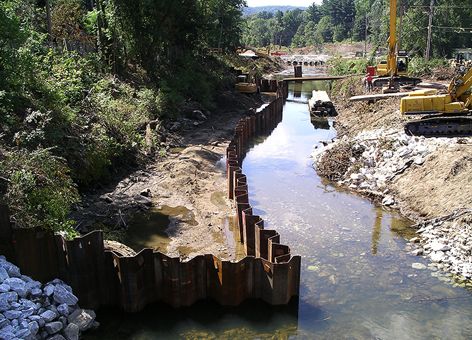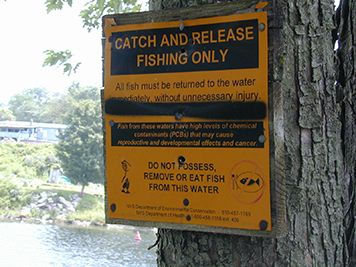PCBs: Why Are Banned Chemicals Still Hurting the Environment Today?
FEB. 7, 2014 — For the United States, the 20th century was an exciting time of innovation in industry and advances in technology. We were manufacturing items such as cars, refrigerators, and televisions, along with the many oils, dyes, and widgets that went with them. Sometimes, however, technology races ahead of responsibility, and human health and the environment can suffer as a result. This is certainly the case for the toxic compounds known as polychlorinated biphenyls, or PCBs.
From the 1920s until they were banned in 1979, the U.S. produced an estimated 1.5 billion pounds of these industrial chemicals. They were used in a variety of manufacturing processes, particularly for electrical parts, across the country. Wastes containing PCBs were often improperly stored or disposed of or even directly discharged into soils, rivers, wetlands, and the ocean. Unfortunately, the legacy of PCBs for humans, birds, fish, wildlife, and habitat has been a lasting one. As NOAA's National Ocean Service notes:
Even with discontinued use, PCBs, or polychlorinated biphenyls, are still present in the environment today because they do not breakdown quickly. The amount of time that it takes chemicals such as PCBs to breakdown naturally depends on their size, structure, and chemical composition. It can take years to remove these chemicals from the environment and that is why they are still present decades after they have been banned.
PCBs are hazardous even at very low levels. When fish and wildlife are exposed to them, this group of highly toxic compounds can travel up the food chain, eventually accumulating in their tissues, becoming a threat to human health if eaten. What happens after animals are exposed to PCBs? According to a NOAA, U.S. Fish and Wildlife Service, and State of New York report [PDF], PCBs are known to cause:
- Cancer
- Birth defects
- Reproductive dysfunction
- Growth impairment
- Behavioral changes
- Hormonal imbalances
- Damage to the developing brain
- Increased susceptibility to disease
Because of these impacts, NOAA’s Damage Assessment, Remediation, and Restoration Program (DARRP) works on a number of damage assessment cases to restore the environmental injuries of PCBs. Some notable examples include:
- New York’s Hudson River. Its waters and sediments, as well as the fish, birds, mink, and other wildlife that live in and around the Hudson River have been contaminated by the approximately 30 years of PCB discharges which came from two General Electric manufacturing plants on the river.
- Washington, D.C.'s Anacostia River. Over the decades, hazardous waste sites and chemical runoff have polluted this urban river, and PCBs are one of the top contaminants, having built up in the river sediments and also the fish. According to a study that NOAA helped fund, an estimated 17,000 people living near the Anacostia could be eating these polluted fish and are at risk of the resulting health effects.
- The St. Lawrence River in Massena, N.Y. After years of manufacturing aluminum and hydraulic fluids at three plants in Massena, N.Y., PCBs from the facilities made their way into the St. Lawrence River, its tributaries the Grasse and Raquette Rivers, and the surrounding area. In 2013, NOAA worked to help secure approximately $20.3 million for projects to restore access to recreational fishing, fish and wildlife, and traditional practices and language for the nearby St. Regis Mohawk Tribe.
Yet the list could go on—fish and birds off the southern California coast, fish and waterfowl in Wisconsin's Sheboygan River, a harbor in Massachusetts with the "highest concentrations of PCBs ever documented in a marine environment." These and other chemical pollutants remain a challenge but also a lesson for taking care of the resources we have now. While PCBs will continue to be a threat to human and environmental health, NOAA and our partners are working hard to restore the damage done and protect people and nature from future impacts.
 An official website of the United States government.
An official website of the United States government. 

